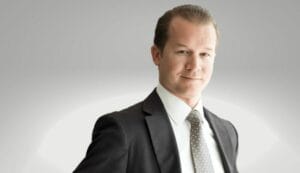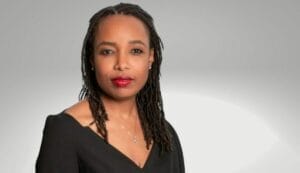Responsible asset owners are preparing their portfolios for the climate transition, reducing holdings in companies with high emissions and pledging billions to climate investments. But climate proofing portfolios is proving one of the most arduous and complex challenges investors have ever faced.
Like concerns that many of the underlying companies in their portfolios haven’t meaningfully reduced their emissions; or the fact investors know they need to continue to provide capital to hard to abate sectors yet the financial rewards for doing so are still sketchy and jeopardize their own net zero targets. Success depends on time-consuming engagement with companies worried about change and governments loath to provide leadership. At one end of the spectrum, some US pension funds even face the risk of being sued if they divest from fossil fuels.
The problem with net zero
Net zero, where investors have focused much of their effort, provides a good window into the ups and downs of climate investment. Witness Sweden’s $46 billion AP4, out of the gate with a net zero strategy in 2012 since when it has cut emissions by 65 per cent, led by reductions in its $20 billion global and domestic equity allocation, the asset class where most emissions live.
AP4 uses fundamental analysis and a quant-based instrument to lower portfolio exposure to high emitting sectors which collectively account for 10 per cent of the portfolio but around 70 per cent of emissions.

Tobias Fransson (pictured), head of sustainability at the Stockholm-based fund, estimates nearly two thirds of that 65 per cent is a consequence of portfolio changes rather than underlying corporate change.
AP4’s progress reveals investors can lower their emissions by divestment and reducing their exposure or weighting to companies in an index, but it doesn’t mean the companies in the portfolio are reducing their emissions.
“We don’t’ want to get into a mindset of gaming the system and saying we are progressing but really just managing the numbers in a way that makes everything look like we are on the right path,” says Mirko Cardinale, head of investment strategy at UK pension fund Universities Superannuation Scheme.
“Investors would be fooling themselves if data shows lower carbon intensity of investment portfolios, but the corporate world isn’t actually decarbonising as expected.”
“Investors would be fooling themselves if data shows lower carbon intensity of investment portfolios, but the corporate world isn’t actually decarbonising as expected.”
Asset owners are developing tools to weed out false climate claims. For example, the giant Canadian investor, CPP Investments has developed a new Abatement Capacity Assessment that asks corporate boards and executives to report how they plan to reduce their emissions to hit promised targets.
Still, getting to net zero is much easier for investors if they avoid high emitting companies. Yet if investors sell a dirty asset, the chances are someone else will buy it less minded to persuade the company to clean up.
“Getting to net zero is much easier if you divest or reduce your exposure to high emitting companies but this doesn’t change global carbon emissions, and the most important thing is that underlying companies reduce their emissions,” says Fransson.
Indexes that encourage companies to step up to the plate to achieve inclusion are one tool. But staying invested in hard to abate sectors for a real-world impact is hardly an easy win.
Identifying opportunities in industrial decarbonization where companies are genuinely committed to the transition requires “a strong reliance on incentive setting, exposure to risk during the build out of new assets and retirement of old assets,” lists Anne-Maree O’Connor, head of responsible investment at $45.43 billion New Zealand Superannuation Fund which has introduced a Paris-aligned benchmark and also applies carbon targets to its externally managed multi-factor portfolios.
The strategy has successfully reduced exposure to climate risk and has had a neutral impact on investment returns.
Xavier Chollet, senior investment manager at Pictet Asset Management (Pictet AM) and specialist in unearthing opportunities from greening the power sector continues the theme that net zero targets don’t necessarily help real-world decarbonization. Speaking from the firm’s Geneva office, he notices that investors steer away from investing in hard to abate sectors because it’s easier to hit carbon targets by investing in companies with less emissions, like technology.
The way net zero focuses on numbers rather than nuance can also be unfair. Adam Matthews, Church of England Pensions Board’s chief responsible investment officer says emerging market corporates typically have a higher carbon footprint in a portfolio. Once again, reducing exposure is an easy win on the net zero road.
“Measuring local companies in emerging markets against globalised benchmarks doesn’t allow for these companies’ differentiation in-line with the Paris agreement,” he says, arguing current frameworks, including the Net Zero Asset Owner Framework, need enhancements to ensure they offer differentiated and fair pathways consistent with the science for these companies.
Progress at CalSTRS, the $325 billion Californian pension fund, in the process of allocating a meaningful 20 per cent of its total public equity book to a low carbon index reveals another important piece in the complex net zero jigsaw. CalSTRS chose a low carbon index because it minimizes active risk, but for large passive investors, the strategy still introduces tracking error.
“We really like to hug the benchmark,” says Kirsty Jenkinson, investment director for the sustainable investment and stewardship strategies at the pension fund.
Data Dilemma
Emissions targets also depend on emissions data, The next element of the challenge. The availability, consistency and quality of corporate emissions data continues to thwart asset owners’ ability to select investments and measure the extent to which portfolio companies are reducing their emissions.
Positively, data is getting better. O’Connor notices the percentage of actual versus estimated data is improving as is the degree of external assurance from companies on their own reporting. And Fransson says EU legislation is about to improve Scope 3 reporting.
Still, Scope 3 data, the largest source of emissions for most businesses, comprises 15 different categories, not all of which are reported or relevant. When investors try and bring a company’s Scope 1,2 and 3 emissions together, or when they try to portion emissions to different portfolios, particularly corporate and sovereign bonds which rely on different methodologies, double counting is ubiquitous.
To avoid this particular headache, in fixed income CalSTRS and USS have focused on measuring emissions in their corporate debt allocation – although USS has a large allocation to gilts.
AP4 has measured its net zero progress on an equity shareholder methodology. If it holds 1 per cent of a company, it reports on 1 per cent of that company’s emissions. Fransson is now immersed in the weighty task of recalculating the equity portfolio emissions based on enterprise value.
“We are not there yet,” he says, reflecting that equity value, outlined in TCFD disclosures and one of the two key emission counting metrics investors are converging around, has had implications on the emissions contribution of other assets classes in AP4’s portfolio like fixed income and credit.
Similarly, CalSTRS has run into challenges tracking the impact of emissions reduction at a company level to a total equity portfolio level.
“The data we get on emissions doesn’t pipe into the financial tools we use to govern the whole portfolio,” says Jenkinson.
Emissions data is also a backward-looking metric. Data from last year won’t help investors predict corporate behaviour in the future. An ambitious initiative at USS involves developing implied temperate change metrics that project a company’s future emissions based on stated targets. But limitations around the data have stalled progress integrating the numbers into portfolio construction.
“We will only get comfortable using forward looking metrics in our investment process, portfolio structuring and index design when the data gets better,” says Cardinale.
Other innovations include indexes like the FTSE TPI Climate Transition Index which embeds forward looking targets by assessing whether portfolio companies have delivered on previous targets and their likelihood of achieving future ones. The approach has offered a breakthrough in how the Church of England Pensions Board has differentiated between companies according to the pace of their transition. “Before this index, we couldn’t embed forward looking targets,” says Matthews.
Pictet AM’s stock picking team measures, reports, and needs to understand emissions in the portfolio. But they get around the data problem by focusing much more of their efforts on other metrics.

“Our analysis is not based on emissions or a company’s emissions trajectory,” says Chollet (pictured).
Instead, analysis of the transition, or impact value, of a company is based on where companies are directing capex growth, homing in on corporates channelling at least 80 per cent of their capex into preparing for the transition. Other metrics include enterprise value analysis (a more forward looking metric than revenue) and an exclusion policy.
looking for Opportunities
Investors are beginning to put as much focus on finding the opportunities in the transition as they have on decarbonising their portfolios. NZ Super’s new benchmark has a higher exposure to climate solutions than its old one, supported by better climate risk analysis, including physical risk, and the potential for investment in renewables and other solutions.
CalSTRS’ investments in climate opportunities is focused on private markets. It has developed a $2 billion low carbon solutions portfolio across asset classes and the risk spectrum. The unconventional portfolio allows the team to invest in opportunities that fall between its strict asset class buckets and their associated internal rates of return and frees the pension fund from its long history of investing with partners in private markets, permitting investments in first time funds, unconventional structures, and organizations.
“We felt we needed to be open to building new structures with new players who understand the policy, technology and physics of the transition,” says Jenkinson.
We felt we needed to be open to building new structures with new players who understand the policy, technology and physics of the transition
At Pictet AM, opportunities are concentrated in what Chollet describes as the picks and shovels of the transition. The team invest in companies that are making the products that will upgrade the grid or produce the semiconductors and computer power needed to train AI that will guide the future. But competition for companies with strong tech, intellectual property, a high barrier to entry and positioned to benefit from the secular growth of the energy transition is fierce.
For the Church of England Pensions Board, one of the biggest opportunities is literally in picks and shovels.
“Estimates suggest that over the next decade overhauling electricity transmission will require the equivalent of all the world’s copper used to date,” says Matthews, an expert on the complexities of investing in a hard to abate sector essential to the transition but which he worries many risk-averse, pollution-wary investors may avoid.
Volatility in new solutions means trustees are wary
Investing in the transition isn’t straightforward. Most investors are focused on opportunities in renewables, preferring to carve out these safe assets rather than allow their capital to flow to other areas of the transition like developing new transport infrastructure, battery storage or changing the grid. There is space in a diversified portfolio to invest in climate solutions across the spectrum, but portfolios are carefully built around the risk appetite of trustees and beneficiaries and unproven technologies like carbon capture and storage, or hydrogen fuel cell innovation are too volatile for institutional investors.
Even the returns from established green assets are up and down. Wind assets have been hit by inflation and higher interest rates. Green bonds have the same credit risk as a conventional bond but have lower yields and lower liquidity. It leads Fransson to highlight another knotty issue inherent in climate investing. “We must take sustainability into account, but it mustn’t impact returns.”
Interviewees also flag that opportunities in the transition may only come to the fore with regulation or subsidies. It means investors are waiting on the sidelines for policy changes to create demand before they invest.
Adrian Mitchell, senior managing director, public equities at Canada’s HOOPP observes “the interaction of technological development with public policy” will lead to “an evolution in the opportunity set for green investments with returns that meet our requirements.”
NZ Super’s O’Connor puts it more more bluntly, arguing the absence of regulation forcing corporate change is a future opportunity cost for investors. “We could be benefiting now from allocating to solutions, including companies that require capex to transition.”
We could be benefiting now from allocating to solutions, including companies that require capex to transition.
But calls for stimulation and subsidies to create more opportunities are not universal. Most investors support a global carbon price that will make polluters pay for what they emit – Fransson calls for global carbon pricing “now”, Matthews says “it would be hugely helpful,” for example – but some worry wider incentives could backfire.
At USS, regulation has an important role steering investment and bringing new considerations into the investment process. The TCFD pushed the fund to consider wider factors, run stress tests and report on specific metrics, setting the investor on a new path to incorporate the energy transition into one of its big picture themes that will ultimately drive its SAA. Another welcome framework, ASCOR, will help investors look at emissions and engagement in their sovereign holdings.
But Cardinale doesn’t see the benefit of being told to invest in a certain way, or subject to regulation that steers allocations to particular assets. “The process of building a robust investment strategy is complex and can’t be a one size fits all,” he says.
And responsible investors protect their freedom to divest just as fiercely as they protect their ability to invest where they think best captures the winners and losers of the transition.
“You can’t force pension funds to hold onto assets they don’t think are attractive in the transition,” says Fransson.
“It was our fiduciary duty to take the decision we did,” says Matthews, recalling the Church of England Pensions Board decision to divest from oil and gas companies following sustained engagement.
Such is the messy state of global politics, Cardinale is also preparing for a transition that is not guided by regulation at all. He believes it is possible the private sector can develop solutions that become competitive in terms of pricing, allowing the world to reduce emissions without a big push from policy makers.
Pictet AM’s Chollet goes further still, arguing regulation is not fundamentally needed, investors don’t want to rely on unreliable governments, and its best viewed as a nice tailwind. New technology must be able to stand on its own and scale because it provides cost savings to customers.
“We can’t invest if something is only profitable because of subsidies. The energy transition will happen because clean energy will be economically competitive.”
We can’t invest if something is only profitable because of subsidies. The energy transition will happen because clean energy will be economically competitive.
It’s just that it’s not happening yet. Climate risk is not sufficiently reflected in asset values. An opportunity in the short-to-medium term perhaps, but from a systemic market perspective, a growing problem.
On one hand there are signs the tide is beginning to turn. Like a recent IMF report suggesting bond investors are starting to price in climate risks for sovereign borrowers more exposed to the physical risks of climate change. Research by economists from UEA and Cambridge University suggests that climate-induced sovereign downgrades could happen as early as 2030.
In the power sector, Chollet says utilities switching their asset base to renewables are worth more than those relying on fossil fuels, a bellwether for a green premium in other sectors like transport ahead. “These companies are accelerating their growth profile and investors are prepared to pay for it,” he says.
Cardinale agrees a comparison of price multiples in the energy sector versus other sectors shows the market is beginning to price in climate risk and says the cost of capital is creeping higher for fossil fuel projects. But he is reluctant to be drawn on whether it is transition risk changing these valuations.
“So many different factors feed into P:E ratios that decide the valuations of an energy company. It could be the trajectory of the oil price linked to supply and demand; slower growth in China impacting demand or the transition, but we can’t be sure.”
Meanwhile concerns that transition risk isn’t valued by the market is a growing theme at CalSTRS as it strays from the benchmark in its global equity allocation.
“I do worry about this,” says Jenkinson. “Because there is no visibility on how the market is pricing risk, we have to assume it may respond at the last moment, when the crisis happens.”
A reference to a sudden correction in asset values flagged by experts in the field like Carbon Tracker think-tank founder Mark Campanale and Oxford University’s Cameron Hepburn.
Because there is no visibility on how the market is pricing risk, we have to assume it may respond at the last moment, when the crisis happens.
The CalSTRS’ risk team is now trying to understand the interplay between risk, return and emissions. From this they hope to be able to calculate what risk they are prepared to take versus the market.
“We are very used to understanding where, say, inflation is going, but the market has no way to calibrate emissions. We don’t have a clear way of saying emissions are doing this and physical risk is doing this and therefore we need to be aware of this,” she says.
Alarm bells that the market isn’t doing its job are starting to ring louder. Like from the Financial Stability Board warning that the scenarios used to assess risks to the financial system may understate climate vulnerability. The UK Pensions Regulator recently flagged concerns that scenario impacts “seem relatively benign” and are at odds with “established science.”
Meanwhile, the number of investors talking about aligning with science (rather than the market) when it comes to climate investment seems to be growing. Singapore’s GIC called in specialists Cambridge Econometrics and Ortec Finance to model how a portfolio composed of 60 per cent global equities and 40 per cent bonds would fare under varying climate scenarios.
The sense of looming change is difficult to ignore.
Long-term, responsible investors have always known they would be at the sharp end of preparing for climate change. They are doing all they can to catch the wave before it breaks.
It’s just that so many different things need to happen for a successful transition.



 “I always value the people that have the ability to do that. Why? Because it takes a lot of courage to be able, in a roomful of people who are nodding their heads, to say, I see it a little bit different; or gee, I’m just not quite there yet.
“I always value the people that have the ability to do that. Why? Because it takes a lot of courage to be able, in a roomful of people who are nodding their heads, to say, I see it a little bit different; or gee, I’m just not quite there yet.